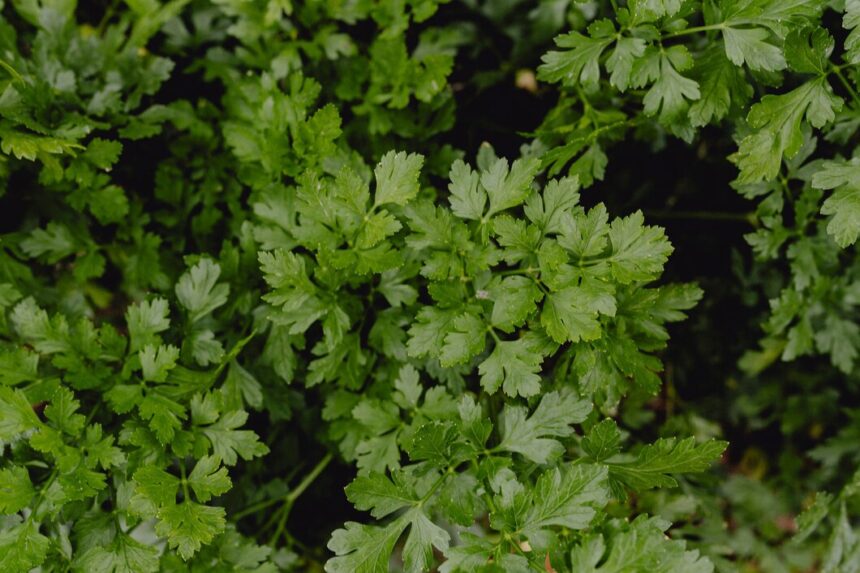Cilantro (Coriandrum sativum) is a popular herb known for its distinctive flavor and versatility in various cuisines. However, one common issue gardeners face is premature bolting, which is when the plant begins to flower and produce seeds before reaching its full growth potential. This can lead to a decrease in leaf quality and yield. Here are ten early signs that your cilantro is bolting too early and tips on how to manage this process.
1. Tall Flowering Stems
One of the first signs of bolting is the emergence of tall, slender flower stalks. If you notice your cilantro plants rapidly growing taller instead of bushier, it may indicate that they are preparing to flower. These stems can grow quite quickly and will overshadow the leaves.
2. Changes in Leaf Shape
As cilantro bolts, the shape and size of its leaves may change. Instead of the familiar broad, flat leaves, you might observe smaller, more serrated leaves forming near the flowering stems. This change can be a signal that the plant is shifting its energy from leaf production to flowering.
3. Less Leaf Production
If you notice a significant reduction in new leaf growth, this could be an early warning sign of bolting. Healthy cilantro plants typically produce new leaves consistently. A slowdown in leaf production may indicate that the plant is focusing its energy on flowering.
4. Leaf Color Changes
Cilantro leaves may begin to lose their vibrant green color when the plant is bolting. Instead, the leaves might turn yellow or pale green. This discoloration can be attributed to stress and a shift in the plant’s focus from growth to reproduction.
5. Stunted Growth
While bolting usually leads to rapid growth in height, it can also cause stunted growth in other areas. If your cilantro plants are not developing as expected and seem to have halted their growth, they may be preparing to bolt.
6. Heat Stress Symptoms
Cilantro is sensitive to heat, and when temperatures rise, it can trigger bolting. Signs of heat stress include wilting leaves and a dry appearance. If your cilantro is exposed to high temperatures for prolonged periods, it may start to bolt earlier than usual.
7. Flower Buds Forming
The appearance of small flower buds at the tips of the stems is a clear indicator that bolting is underway. These buds can develop quickly and will eventually bloom, signaling the end of the cilantro’s leaf production phase.
8. Increased Spacing Between Leaves
As cilantro prepares to bolt, you may notice increased spacing between the leaves on the stem. This elongation is a response to the plant’s effort to reach for sunlight and can indicate that bolting is imminent.
9. Altered Aroma
Healthy cilantro emits a fresh, herbaceous aroma. However, when bolting begins, the plant’s scent may change, often becoming less fragrant. This change can be a sign that the plant is diverting resources toward flowering rather than leaf development.
10. Time of Year
Cilantro is a cool-weather herb, and its natural growing season is in spring and fall. If planted during hot summer months, cilantro is more likely to bolt prematurely. Pay attention to seasonal changes and plant your cilantro accordingly to prevent early bolting.
Tips to Manage Premature Bolting
- Plant at the Right Time: Sow cilantro seeds in early spring or late summer for a fall harvest. Avoid planting during hot weather.
- Provide Partial Shade: During peak summer heat, consider providing shade for your cilantro plants to help regulate temperature.
- Regular Watering: Ensure your plants receive consistent moisture to reduce stress that can lead to bolting.
- Harvest Regularly: Regularly cutting leaves can encourage new growth and may delay bolting.
By keeping an eye on these early signs of bolting, you can take proactive steps to prolong the life of your cilantro plants and enjoy their delicious leaves for longer. With the right care, you can ensure a bountiful cilantro harvest.
Join 'Farmers Mag' WhatsApp Channel
Get the latest Farming news and tips delivered straight to your WhatsApp
CLICK HERE TO JOIN






